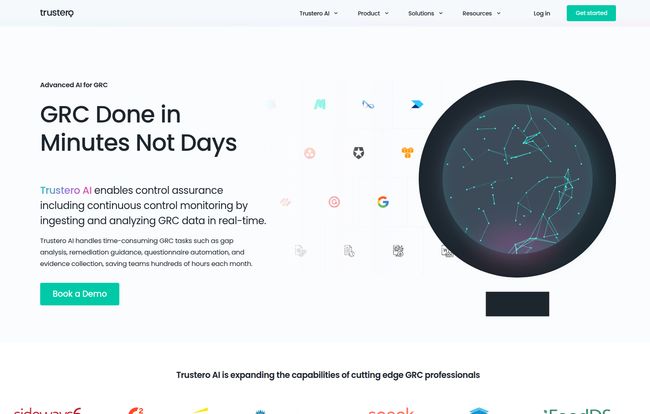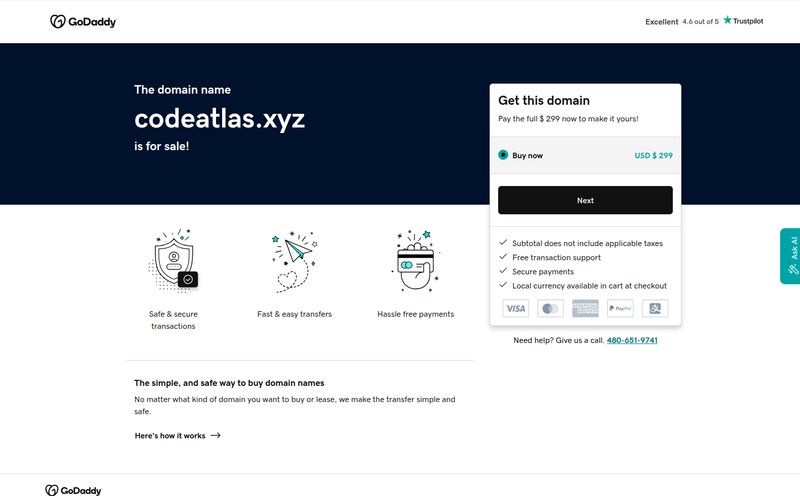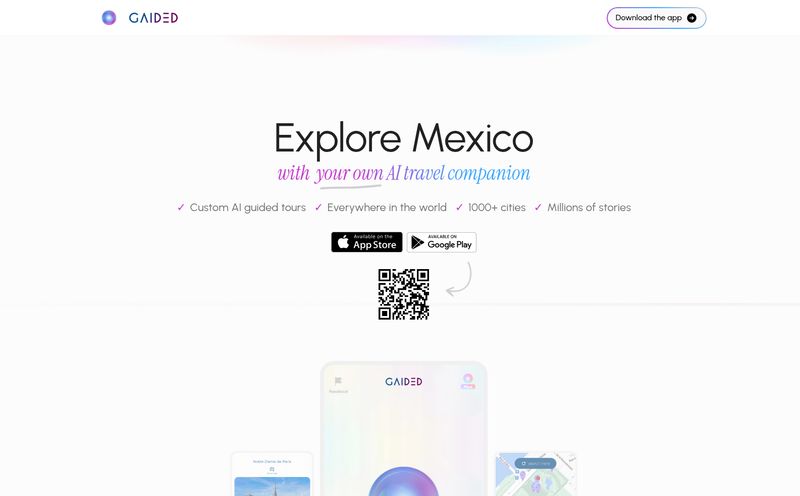If you’ve ever been involved in a security audit—SOC 2, ISO 27001, you name it—you know the feeling. The cold sweat. The looming dread of endless spreadsheets. The frantic search for that one piece of evidence you know you have somewhere in a folder, from three quarters ago. It’s a special kind of corporate misery, and for years, we’ve just accepted it as the cost of doing business.
We’ve been told that Governance, Risk, and Compliance (GRC) is just... hard. It's a manual, soul-crushing grind of ticking boxes, collecting screenshots, and hounding engineers for information. But what if it didn’t have to be? I've been in the SEO and digital growth space for years, and I’ve seen countless tech companies stumble, not on their product, but on the operational drag of compliance. So when I see a tool that promises to use AI to lift that burden, my ears perk up. That’s what led me to take a look at Trustero.
They’re making some bold claims, like getting companies SOC 2 audit-ready in just 15 days. So, is it just another slick marketing pitch, or is there some real fire behind that smoke? Let's get into it.

Visit Trustero
What Exactly Is Trustero? (And Why Should You Care?)
At its heart, Trustero is an AI-powered GRC platform. Okay, I know, another acronym. But GRC is the backbone of how a mature company proves it’s trustworthy. It’s the policies, procedures, and controls you have in place to manage risk and show customers, partners, and auditors that you're handling their data responsibly.
Traditionally, managing GRC is a human-powered hamster wheel. You manually check your systems against a framework’s requirements, you document everything in spreadsheets, and you pray you didn’t miss anything. Trustero’s whole idea is to flip that script. Instead of you chasing the information, its AI goes out and finds it for you.
It connects to your tech stack—your cloud provider, your code repositories, your HR systems—and continuously monitors your environment. It’s not just about a point-in-time audit; it’s about continuous compliance. A living, breathing view of your security posture. This shift from 'panic-before-the-audit' to 'always-on-compliance' is, in my opinion, the single biggest game-changer for modern security teams.
Taming the Compliance Beast with AI
So how does the magic actually happen? It’s not just a black box labeled “AI.” Trustero seems to have broken down the most painful parts of GRC and pointed a smart algorithm at each one.
The Genius of AI-Powered Gap Analysis
This is the big one for me. A gap analysis is where you compare your current setup to what a framework like SOC 2 requires. Doing this by hand is a nightmare. It's reading hundreds of controls and then trying to map them to your own internal chaos. Trustero automates this. Its AI scans your connected systems and says, “Hey, for control SOC-123, you’re supposed to have MFA on all admin accounts, but these three accounts don’t.” That’s not just data; that’s actionable intelligence. It turns a week-long headache into a dashboard you can check over your morning coffee.
Say Goodbye to Endless Questionnaires
If you're in a sales-led organization, you know the pain of the security questionnaire. Every potential big client sends one, and they’re all slightly different. It's death by a thousand paper cuts. Trustero’s questionnaire automation uses what it already knows about your security controls to pre-fill answers. It creates a centralized library of responses, so you’re not starting from scratch every single time. A huge, huge time saver.
Collecting Evidence Without Losing Your Mind
This is where the real grind of audits happens. An auditor asks for “proof that all new employees completed security training in Q2.” You then spend the next four hours digging through your LMS exports and taking screenshots. Trustero’s automated evidence collection turns this on its head. Because it’s connected to your systems, it can automatically pull and catalog that proof as it happens. It's like having a digital filing clerk working 24/7, making sure every piece of evidence is exactly where it needs to be when the auditor comes knocking.
Keeping Your Controls in Check with Assurance
Control Assurance is basically the platform’s way of making sure the things you said you were doing, you’re still doing. It continuously validates that your controls are working as intended. This is critical for avoiding security drift, where your perfect compliance posture slowly erodes over time because someone changed a setting or a process was forgotten. It keeps you honest and, more importantly, secure.
Who Is Trustero Actually For?
Looking at their site and the problems they solve, it’s clear this isn't just for one type of person. It's for the whole GRC ecosystem within a company.
- For Compliance and Risk Teams: This is your new best friend. This is the tool that gives you back your weekends and lets you focus on actual strategy instead of administrative drudgery.
- For CISOs and Leadership: You get a real-time dashboard of your company’s risk posture. No more relying on month-old reports. You can see where the gaps are and make informed decisions about where to invest resources.
- For Internal Audit: Imagine starting an audit where most of the evidence is already collected, organized, and waiting for you. It transforms the audit from an adversarial process into a collaborative one.
- For the folks in Customer Trust and Revenue: You can answer those security questionnaires faster and with more confidence, which helps close deals and build trust with your biggest customers.
It’s really for any organization that has outgrown its spreadsheet-based approach to compliance and wants to scale its security program without just throwing more bodies at the problem.
The Good, The Bad, and The AI-Powered
No tool is perfect, of course. Based on the info out there and my experience with similar platforms, here's my honest take. The good is pretty compelling. The platform is designed to save a ton of time and, by extension, money. One user on their site said,
“Honestly, it was 100 times faster.”That’s not a small claim. Automating tasks in GRC directly cuts down on the insane number of person-hours these processes usually take, and it can seriously reduce your bill from external auditors, since you're handing them a neatly organized package instead of a box of receipts.
The platform also supports various frameworks, which is great. You’re not locked into just one. You can manage SOC 2, ISO 27001, and others from a single place. The actionable guidance is another huge plus—it doesnt just point out a problem, it gives you suggestions on how to fix it.
On the flip side, there are some things to consider. Any powerful platform like this will require some initial setup. You have to connect your data sources and get things configured. This isn’t a magic wand you wave; it's an engine you have to install. There’s likely a bit of a learning curve as your team gets used to a new way of working. And, you're placing a lot of trust in the AI's accuracy. While it’s probably more accurate than a tired human on a Friday afternoon, you still need to understand and validate its findings. This is a co-pilot, not a full autopilot.
The All-Important Question of Pricing
Ah, the part you were scrolling for. And... you’re not going to find a neat little pricing table on Trustero’s website. Sorry to disappoint.
This is actually pretty common for B2B SaaS in this space, and I don't see it as a red flag. Pricing for a GRC tool often depends on factors like the size of your company, the number of frameworks you need, and the complexity of your tech stack. A one-size-fits-all price just doesn’t work. Your best bet is to hit that “Request a Demo” button. That way, you can talk to a real person, explain your needs, and get a quote that’s specific to you. It also gives you a chance to see the platform in action, which you should absolutely do before buying any tool like this.
So, Is Trustero the Right GRC Tool for Your Team?
After digging in, I’m optimistic. Trustero seems to be tackling a very real, very expensive problem with a smart, modern solution. If your team is spending more time on compliance paperwork than on actual security initiatives, this is the kind of tool that should be on your radar. It’s built for the way modern, cloud-native companies work.
It's not a silver bullet—you still need a solid security culture. But it acts as a massive force multiplier, automating the tedious work so your smart people can focus on the hard problems. It’s about turning GRC from a cost center into a business enabler. And that’s a pretty powerful shift.
Frequently Asked Questions about Trustero
- What is Trustero in a nutshell?
- Trustero is a GRC (Governance, Risk, and Compliance) platform that uses AI to automate security compliance tasks. It helps companies achieve and maintain compliance with frameworks like SOC 2 and ISO 27001 by automating evidence collection, gap analysis, and more.
- What compliance frameworks does Trustero support?
- While their site focuses on the approach, platforms like this typically support all the major frameworks, including SOC 2, ISO 27001, PCI DSS, HIPAA, and GDPR. It's designed to be flexible and accommodate multiple standards.
- How does Trustero actually save us money?
- It saves money primarily by drastically reducing the man-hours your team needs to spend on compliance tasks. It also helps lower the costs of external audits because your evidence is well-organized and readily available, meaning auditors spend less time (and bill you for less time) on discovery.
- Is Trustero difficult to set up and use?
- Like any powerful software, there will be an initial setup phase to connect it to your systems (like AWS, GitHub, etc.). There might be a slight learning curve, but the goal of the platform is to be more intuitive and much less complex than managing compliance manually with spreadsheets.
- Can Trustero integrate with the tools we already use?
- Yes, that's a core part of its value. It's built to integrate with a wide range of security and cloud applications to pull in the evidence and data it needs to function. This integration is what powers its automation.
Final Thoughts
The world of GRC is ripe for disruption. For too long, it's been a roadblock to innovation and a source of stress for tech teams. A platform like Trustero represents a move in the right direction—using intelligent automation not to replace humans, but to free them up to do more valuable work. If you're tired of the spreadsheet grind, it might be time to let an AI take a look.



